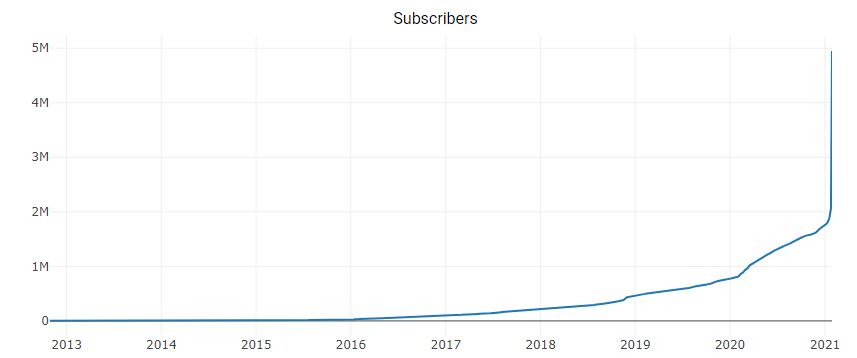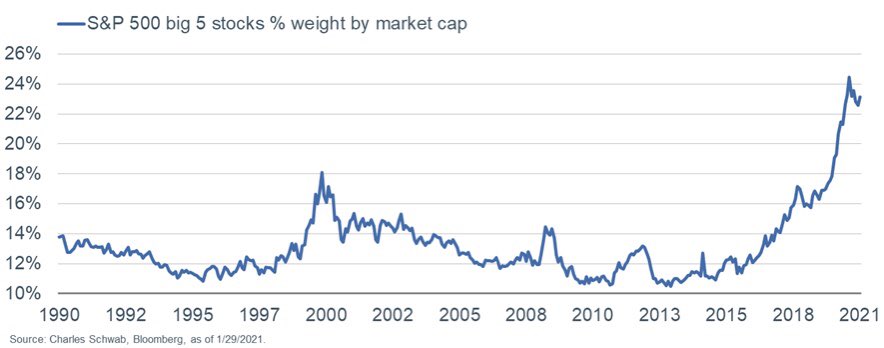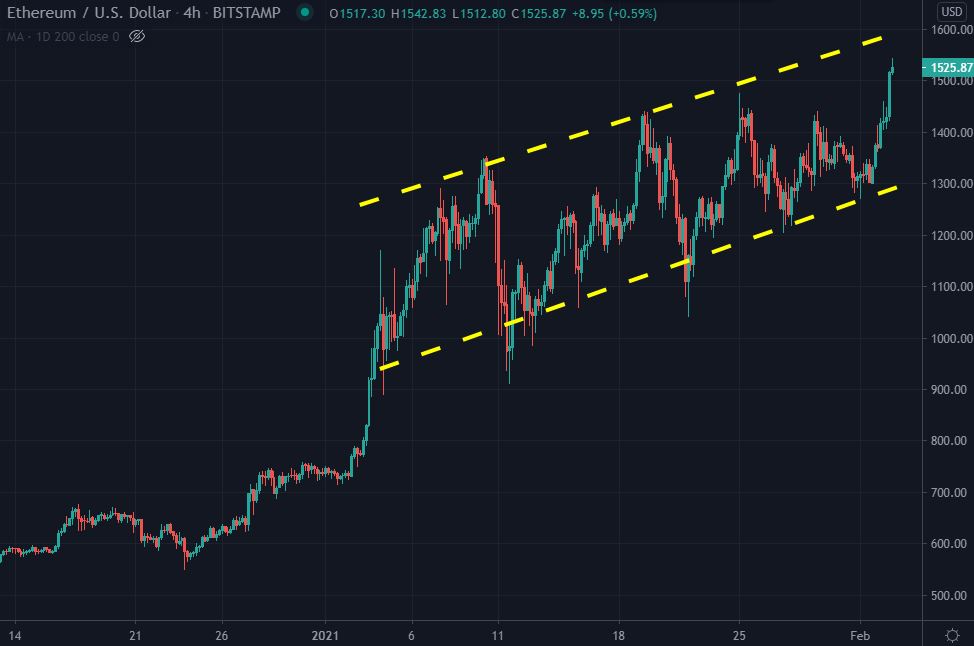Looking at the charts today, it does seem like it’s game over for GameStop.
From the phenomenal high of $482.55 a share, it’s now trading at $140, which is still four or five times would it should be worth and about double its previous all-time high from 2007. Now that the dust has settled, it’ll be nice to understand what the lesson in all this is.
No doubt it was a historic event, but what does it all mean?
In my mind, the narrative that main street was finally able to beat wall street at its own game is extremely misguided. As we pointed out early on, there were hedge funds on both sides of this trade.
It’s hard to see how buying overpriced shares of a company that’s losing money will make the world a better place.
One lesson that the world seems to have learned is that social media can be a leading indicator, and even a driving force, for future price movements.
The Reddit platform is no doubt seeing a massive influx of new signups at the moment, and over the last week, the WallStreetBets community’s subscriber base has grown by about four times.

You can probably guess that all the top growing communities there have to do with stocks, cryptocurrency and investing, so there are certainly lots of people looking to get involved in trading at this time.
One of our key takeaways is that this entire episode has highlighted some of the key flaws in the financial markets and will very likely be a pivotal moment in the adoption of digital assets.
Another thing that it seems just had to be learned the hard way is that the markets don’t usually hand out free money. Especially for beginners, a well-diversified, long-term buy-and-hold portfolio is really the best possible way that you can invest, but that’s not a very popular narrative right now.
Too earnings
In just a few moments both Amazon and Google will deliver their earnings reports for the fourth quarter of 2020.
While Facebook’s report last week was quite stellar, it did highlight some strains in the online advertising market going forward. Whether that will carry over to Google’s figures is really anyone’s guess.
Amazon on the other hand has been the main benefactor of the COVID-19 rolling lockdowns as many brick and mortar shops have been forced to close.
The other thing that coronavirus seems to have consolidated is the position of the top stocks against the rest of the market. In this graph we can see the overall percentage of Apple, Microsoft, Amazon, Google and Facebook within the S&P 500 index.
As we can see, they’ve gone from about 12% in 2015 to a new peak of about 25%, as investors simply seem to prefer the big names.

Today, the U.S. passed an interesting milestone, as more people have received the vaccination than have been diagnosed with the virus.
As we’ve seen in Israel, where a very large portion of the population has been vaccinated, the number of cases has gone down.
The faster we start to see cases going down, the faster we can all get back to our daily lives and the more the reflation trade will likely start to accelerate.
ETH ATH

Yes, it is possible for it to blow the top off this graph, but it certainly isn’t the most likely scenario.
A better plan would be to buy on support when it’s near the bottom line, but hindsight is always 20/20.


